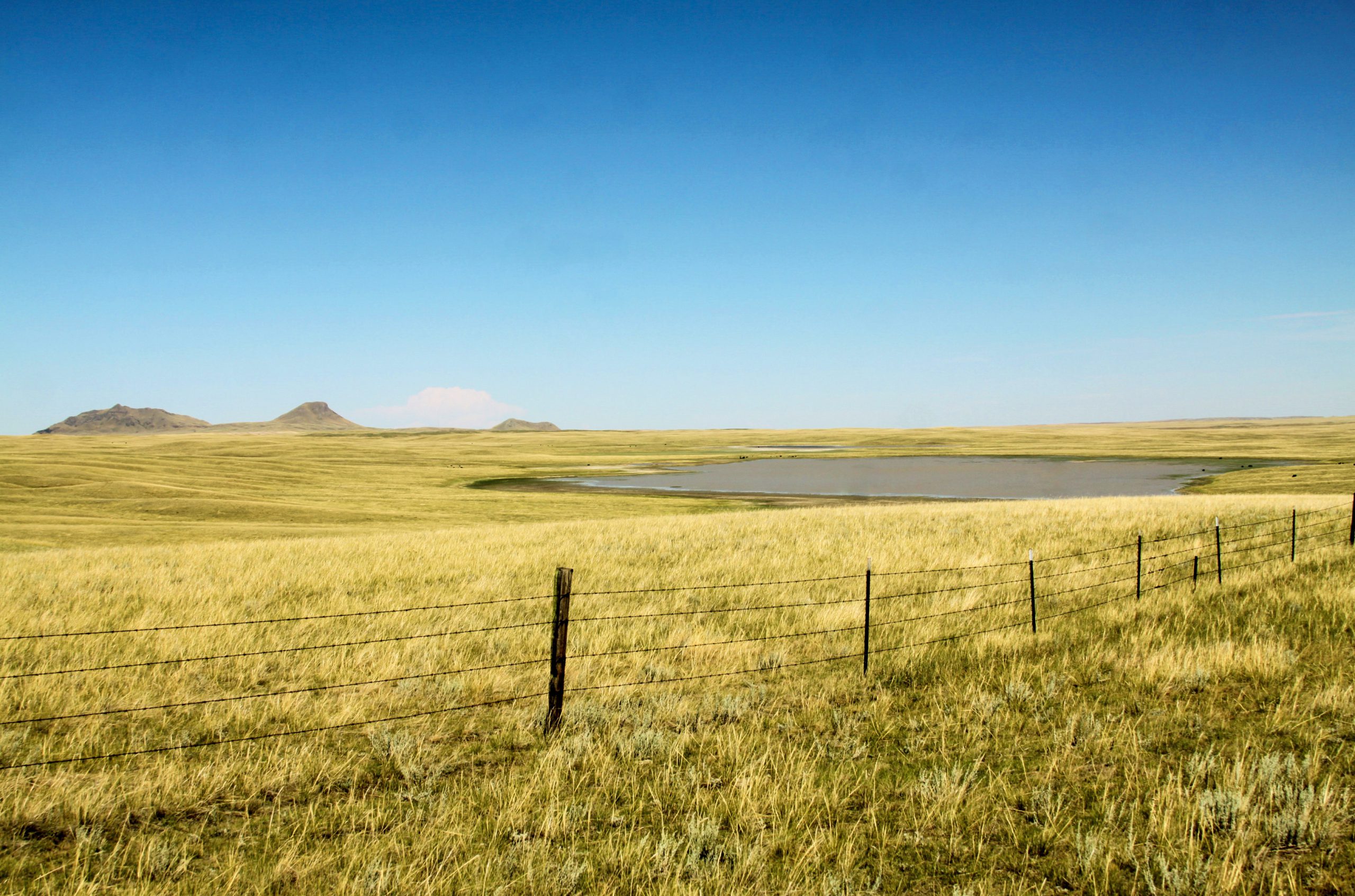Indianz.Com > News > Fort Belknap landowners see another round of Cobell buy-back offers

Fort Belknap landowners seen another round of Cobell buy-back offers
Monday, August 1, 2022
Indianz.Com
Landowners from the Fort Belknap Indian Community have until next week to accept offers from the Land Buy-Back Program for Tribal Nations.
According to the Department of the Interior, 2,184 landowners received offers for their fractional interests on the Fort Belknap Reservation, located in Montana. They have until August 12 to determine whether they want to sell their holdings.
“The department is excited to be consolidating land again through the Land Buy-Back Program at the Fort Belknap Indian Reservation,” Assistant Secretary for Indian Affairs Bryan Newland said in a news release last Thursday.
According to the department, offers totaled $11.1 million. Any fractional interests acquired from willing sellers will be transferred to the Fort Belknap Indian Community.
“The department recognizes the immense value that tribal involvement and advocacy brings to our mutual land consolidation efforts,” Newland said. “We appreciate the continued collaboration with the Fort Belknap Indian Community to ensure that landowners are aware of this unique opportunity and understand their options and the resources available to make an informed decision.”
Land Buy-Back Program for Tribal Nations Cumulative Sales June 29, 2022 [PDF]
land-buy-back-program-for-tribal-nations-cumulative-sales-through-june-29-2022
Fort Belknap landowners have previously participated in two rounds of the Buy-Back Program, according to sales data. So far, 35,091 fractional interests, representing the equivalent of 268,443 acres, have been acquired and transferred to the tribe.
But the program is about to run out of money. As of July 26, only $7.6 million is left out of a $1.9 billion land consolidation fund that was established through the settlement of the Cobell trust fund litigation.
Of the $7.6 million left in the Cobell land consolidation fund, $3.6 million can be used to acquire fractional interests, according to the department. The remaining $4 million is to be used for administrative and implementation costs.
Since establishment of the Buy-Back Program, landowners have accepted $1.68 billion for their fractional interests. Nearly 1.1 billion fractional interests, representing the equivalent of 2.94 billion acres, have been acquired and returned to tribes, the original owners of the land.
According to the sales data, landowners on a little over 50 reservations have participated in the program. Nearly 40 percent of owners accepted offers, the data shows.
The program was designed to address the fractionation of Indian lands. Over time, parcels become owned by a growing number of individuals, making the properties more difficult to manage and harder to explore economic opportunities.
No one in federal government, nor in Congress, has attempted to extend the Cobell settlement program, even after it became clear that the money would run out. The Bureau of Indian Affairs has an existing land consolidation effort that has never been funded with adequate appropriations to address the ongoing fractionation of Indian trust lands.
For fiscal year 2022, the Biden administration is proposing to spent $150,000 to “re-establish the Indian Land Consolidation Program.” The money would have a new focus — on helping tribes address climate change, according to a budget justification document for the BIA. Tribal consultation is anticipated.
“Reducing land fractionation and achieving tribal majority ownership in lands supports Tribal sovereignty by enabling Tribes to make decisions about land management, use, and protection that facilitate climate resilience,” the document reads. “The re-established program will support tribal climate mitigation and adaptation efforts through land consolidation. Indian Affairs will consult with tribes on how best to develop this program.”
Search
Filed Under
Tags
More Headlines
‘Mr. Secretary, Why are you silent?’: Interior Department cuts impact Indian Country
VIDEO: Oversight Hearing to Examine Native Communities’ Priorities for the 119th Congress
AUDIO: Oversight Hearing to Examine Native Communities’ Priorities for the 119th Congress
AUDIO: Leaving Indian Children Behind: Reviewing the State of BIE Schools
Cronkite News: Native student program shuts down due to President Trump
NAFOA: 5 Things You Need to Know this Week (March 3, 2025)
Filmmaker Julian Brave NoiseCat makes history at Academy Award ceremony
Senate Committee on Indian Affairs schedules business meeting to consider bills
Chuck Hoskin: Cherokee Nation advocates for Indian Country
Native America Calling: Native education advocates assess the new political landscape
AUDIO: American Indian and Alaska Native Public Witness Hearing Day 3
Native America Calling: The Trump administration, endangered fish and a new book
AUDIO: American Indian and Alaska Native Public Witness Hearing Day 2, Afternoon Session
AUDIO: American Indian and Alaska Native Public Witness Hearing Day 2, Morning Session
Native America Calling: The game is changing for student athletes
More Headlines
VIDEO: Oversight Hearing to Examine Native Communities’ Priorities for the 119th Congress
AUDIO: Oversight Hearing to Examine Native Communities’ Priorities for the 119th Congress
AUDIO: Leaving Indian Children Behind: Reviewing the State of BIE Schools
Cronkite News: Native student program shuts down due to President Trump
NAFOA: 5 Things You Need to Know this Week (March 3, 2025)
Filmmaker Julian Brave NoiseCat makes history at Academy Award ceremony
Senate Committee on Indian Affairs schedules business meeting to consider bills
Chuck Hoskin: Cherokee Nation advocates for Indian Country
Native America Calling: Native education advocates assess the new political landscape
AUDIO: American Indian and Alaska Native Public Witness Hearing Day 3
Native America Calling: The Trump administration, endangered fish and a new book
AUDIO: American Indian and Alaska Native Public Witness Hearing Day 2, Afternoon Session
AUDIO: American Indian and Alaska Native Public Witness Hearing Day 2, Morning Session
Native America Calling: The game is changing for student athletes
More Headlines